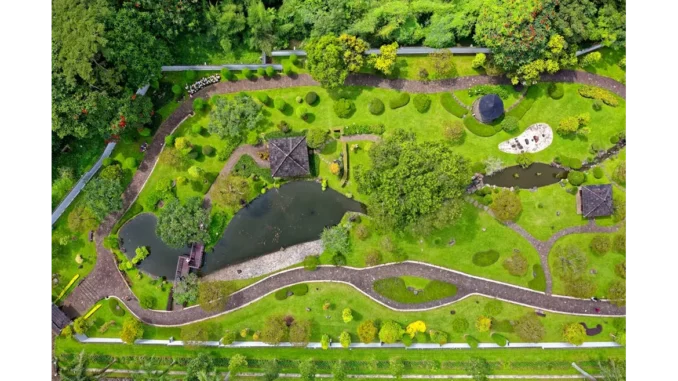
Formal Gardens: A Symphony of Nature and Design
Luxury, perfected by Elegancia.homes. We plan, build, and guarantee your dream conservatory.
In the enchanting world of classical architecture, formal gardens emerge as a testament to the masterful fusion of nature’s beauty and meticulous human design. These outdoor masterpieces, renowned for their precise symmetry and structured forms, transcend mere gardening to become living artworks, echoing the elegance of ancient Greece and Italy. With roots steeped in the opulence of European villas, formal gardens embody the ordered beauty and control cherished by the elite. Join us as we explore the captivating history and defining elements that make formal garden design a timeless choice for those wishing to infuse their landscapes with a touch of grandeur.
Historical Roots and Influences
The origins of formal gardens are deeply entwined with the grandeur of lavish estates, where each hedge, pathway, and sculpture was a testament to humanity’s command over the natural world. The exquisite symmetry and balanced proportions were not simply aesthetic choices but powerful symbols of order and dominance—hence the term “power gardening.” This style reached its pinnacle under the genius of André Le Nôtre during the reign of Louis XIV in France, with the gardens of Versailles standing as an enduring tribute to his visionary talent. Le Nôtre’s innovative designs, featuring false perspectives, level changes, and reflective pools, have left a lasting legacy, inspiring formal landscapes worldwide.
Signature Elements of Formal Garden Design
At the heart of every formal garden lies a dedication to symmetry, a principle that manifests in every intricately planned aspect of the landscape. These key elements bring a formal garden to life:
-
Symmetry and Balance: As the cornerstone of formal garden design, symmetry creates a harmonious and orderly aesthetic that is both visually pleasing and mentally soothing.
-
Statuary and Sculptures: Serving as focal points, these elements draw the eye and imbue the garden with a layer of classical beauty, anchoring it in its historical origins.
-
Topiary and Clipped Hedges: As nature’s own sculptures, these meticulously shaped plants demonstrate precision and creativity, offering endless possibilities for personalized design.
-
Ornamental Details: Through graceful statuary or intricate paving, these accents introduce elegance and complexity, enhancing the garden’s overall allure.
-
Natural Stone: Whether forming grand pathways or refined borders, natural stone provides a durable and timeless foundation for the garden’s structural elements.
Modern Applications in Urban Landscapes
While formal gardens often conjure images of expansive European estates, the principles that define this style are not limited to vast spaces. In contemporary urban landscapes, designers skillfully integrate the elegance of formal gardens into the fabric of modern living, proving that beauty knows no bounds. From a stately avenue of trees framing a city skyline to a serene classical parterre garden nestled in an urban backyard, innovative methods continually emerge, bringing this timeless style to life in new and exciting ways.
Formal gardens remain enduring symbols of elegance, sophistication, and classical beauty. With their symmetrical layouts, meticulous design, and carefully curated plantings, they evoke a sense of order and harmony that transcends time and place. Whether gracing the grounds of a historic estate or enhancing a modern urban setting, formal garden designs continue to inspire and captivate with their timeless allure and perennial appeal.


Be the first to comment